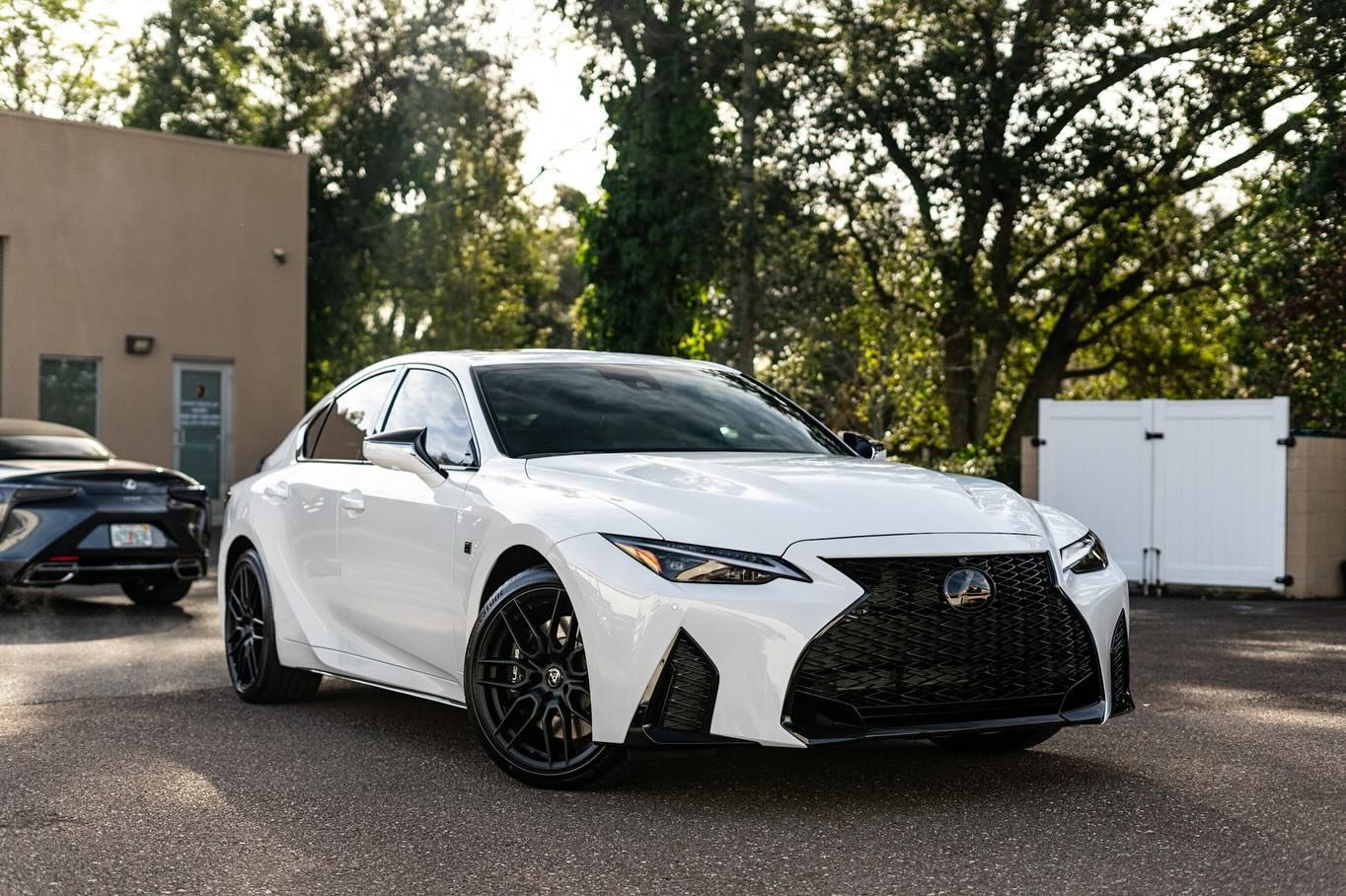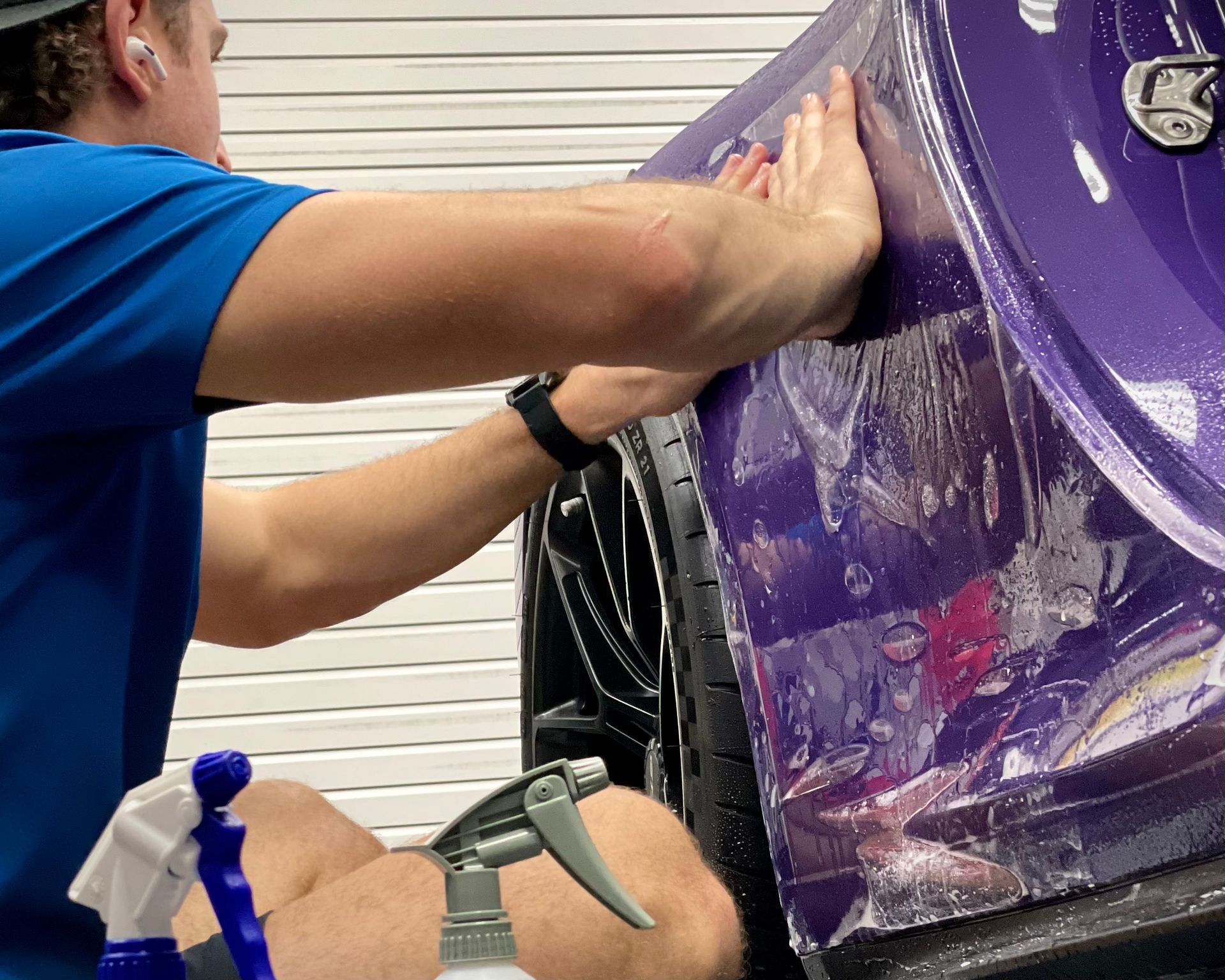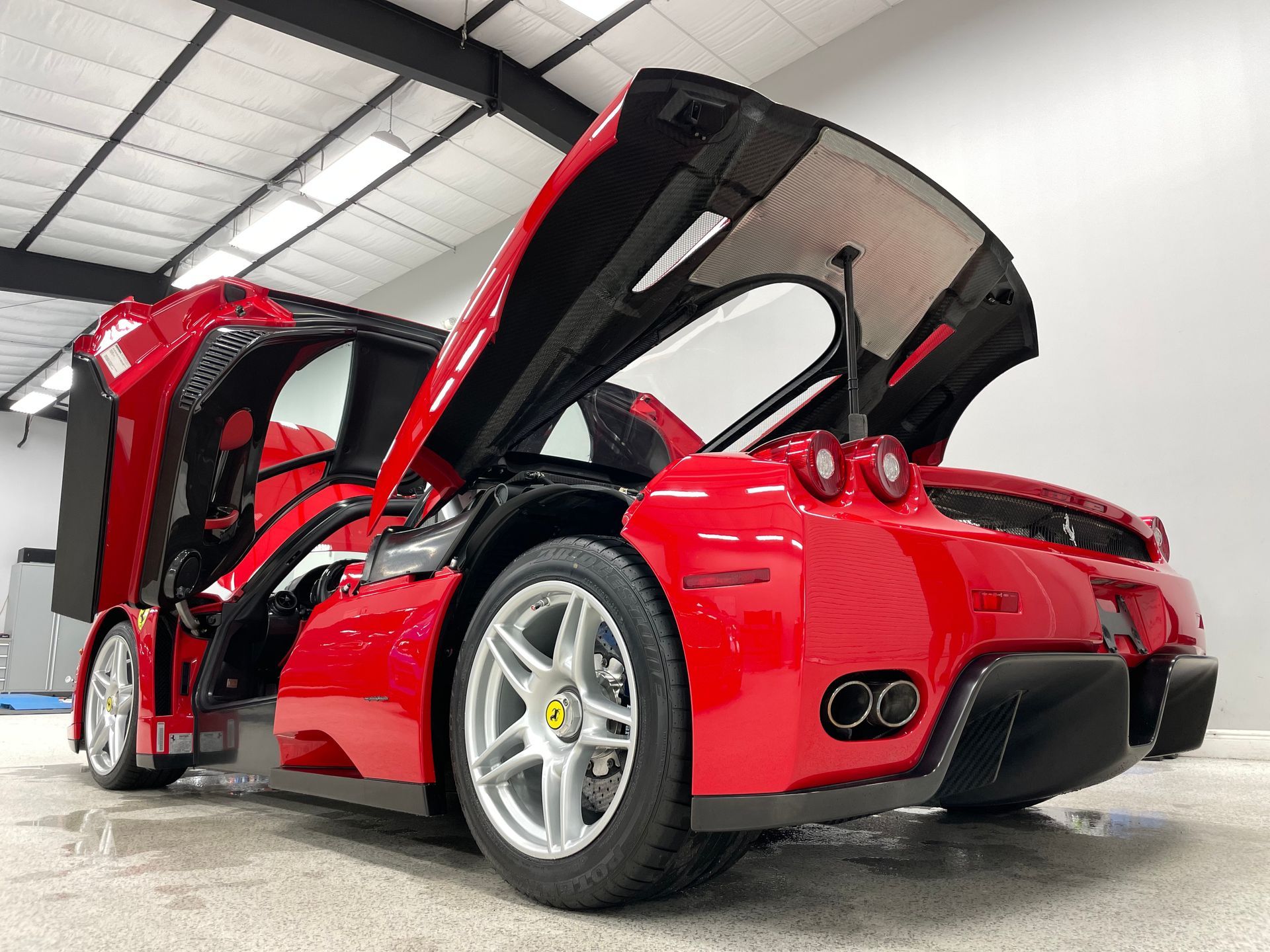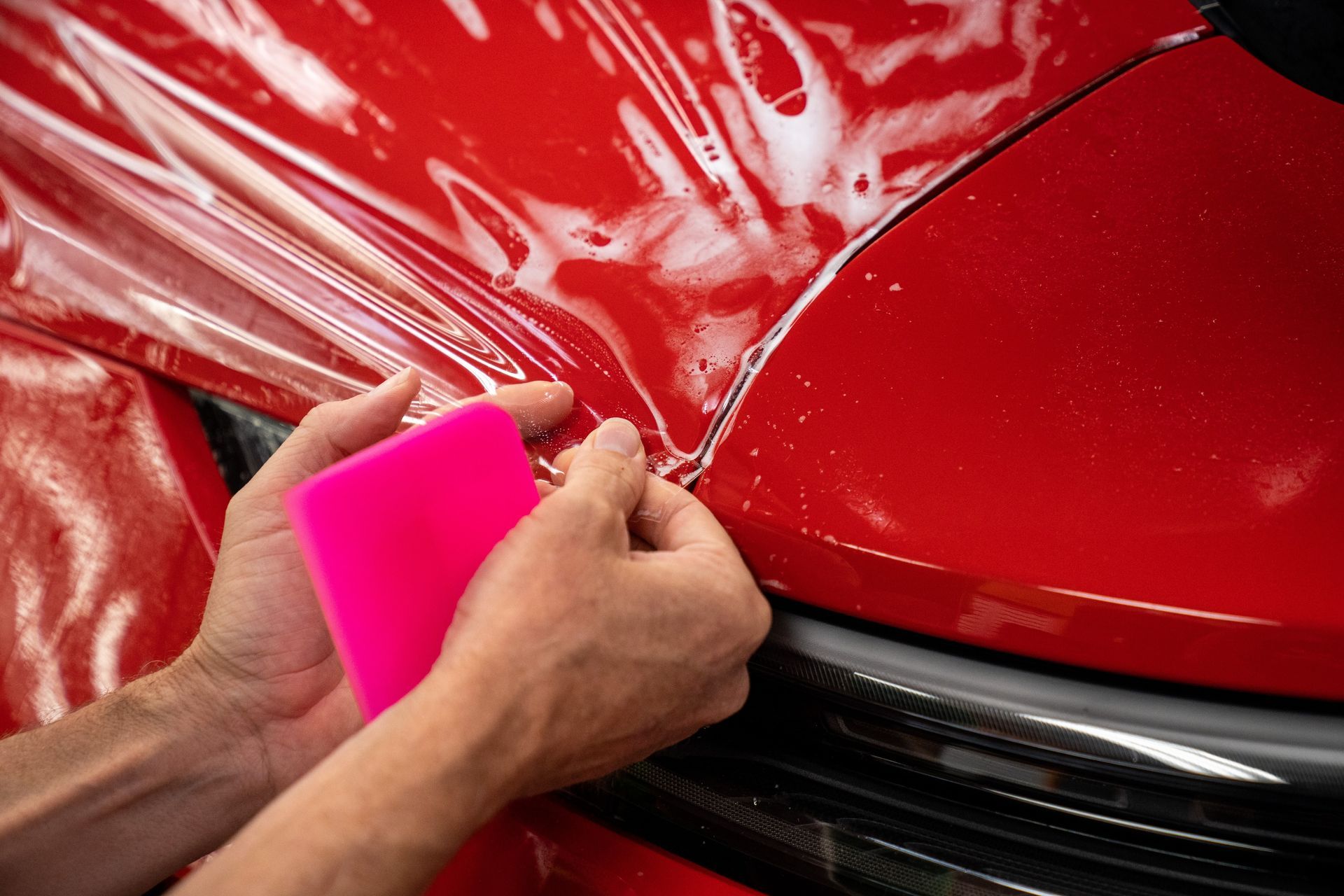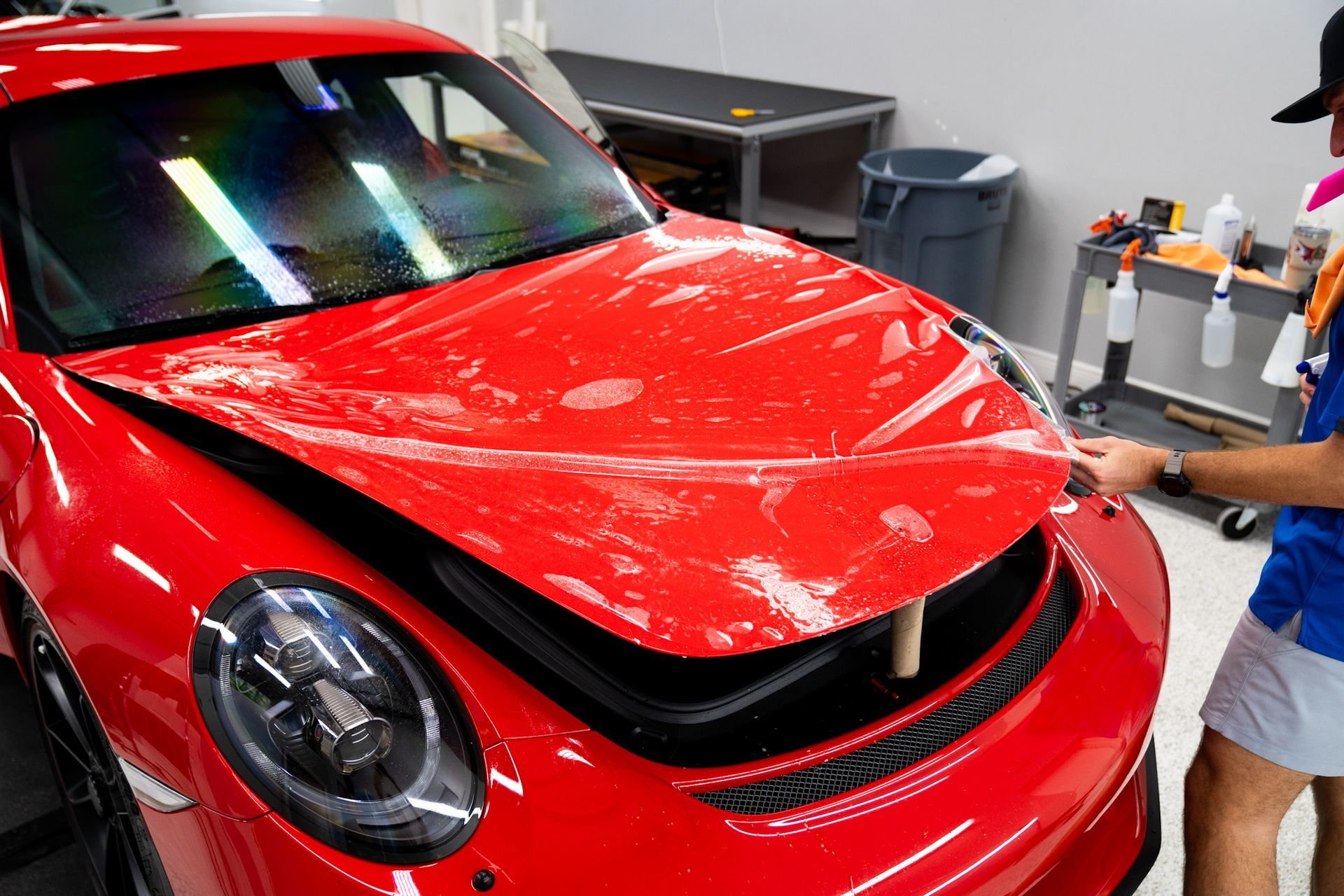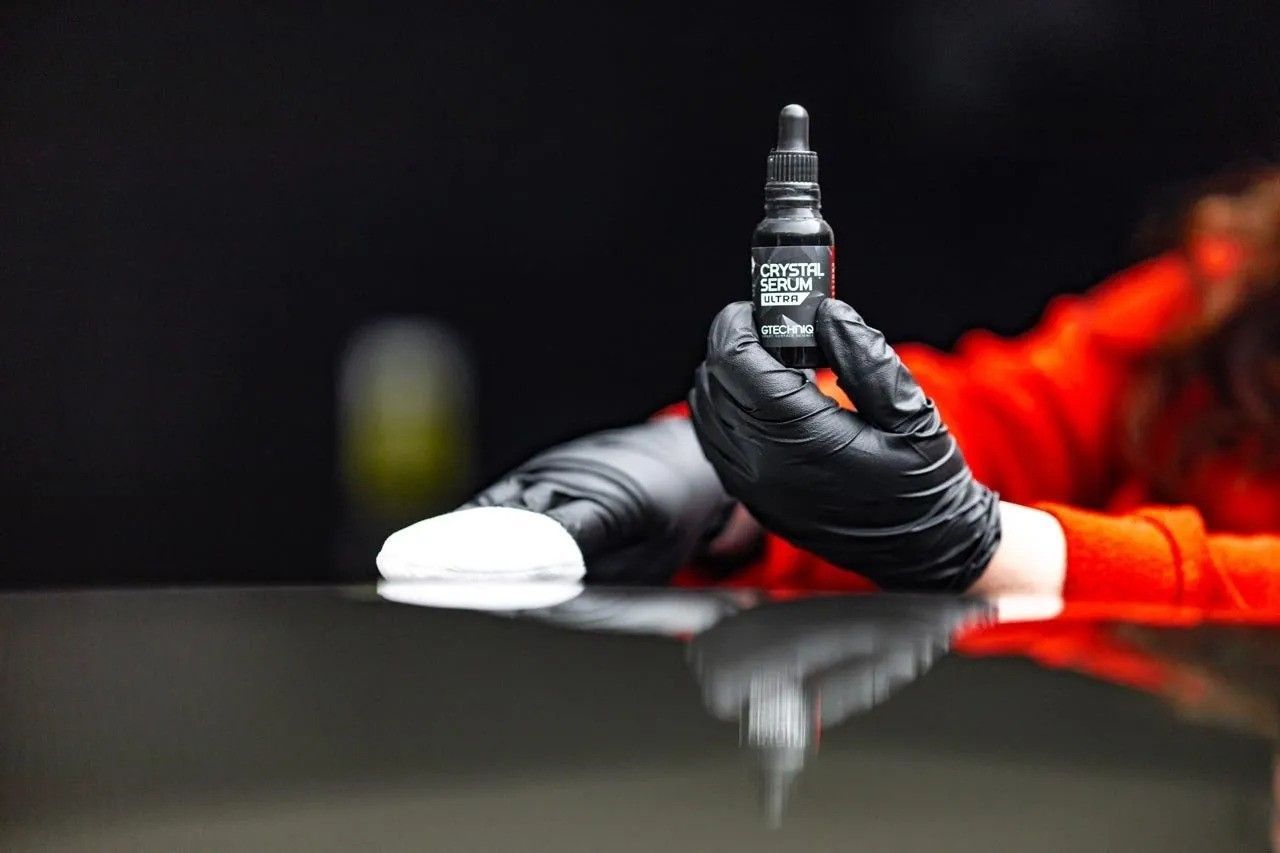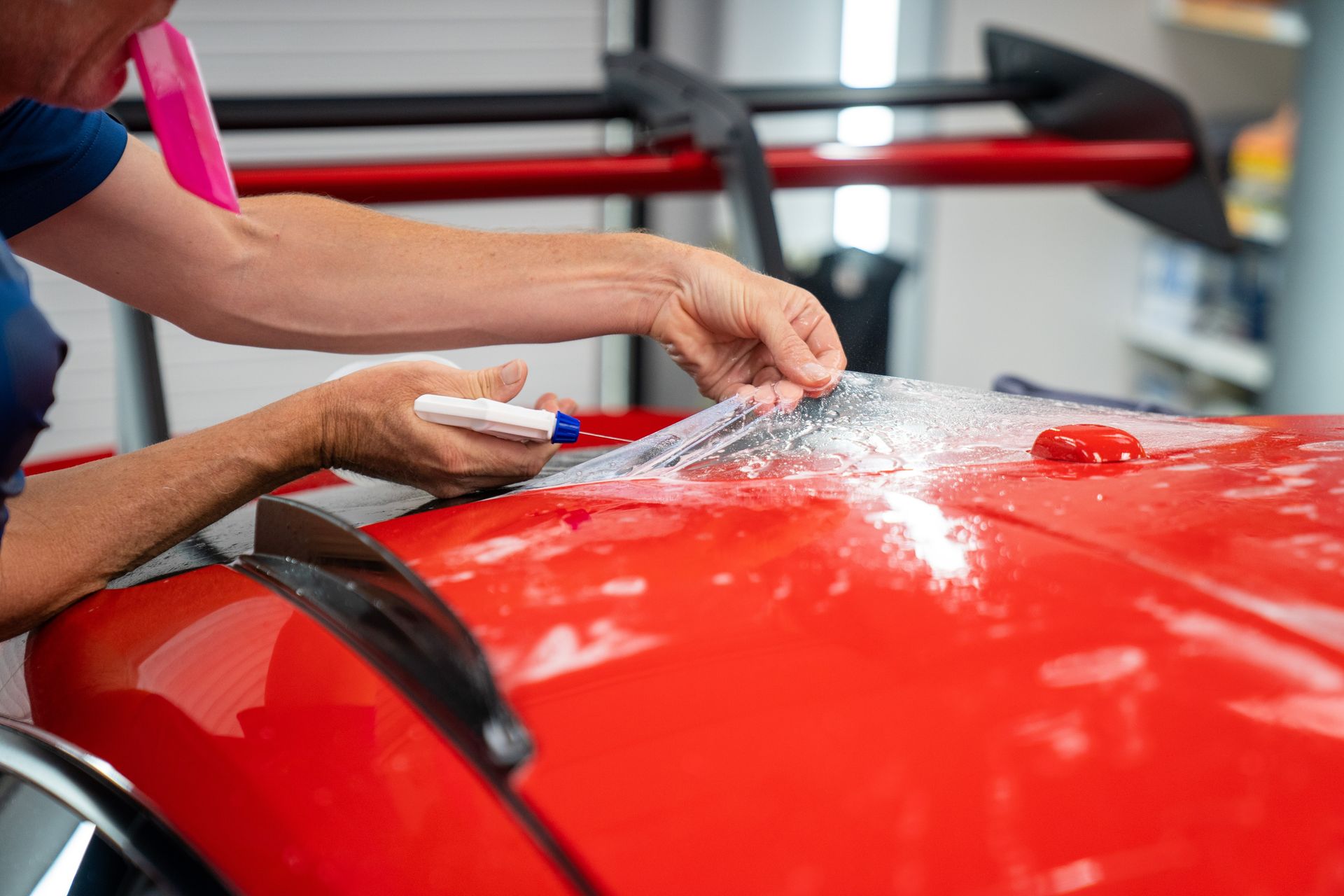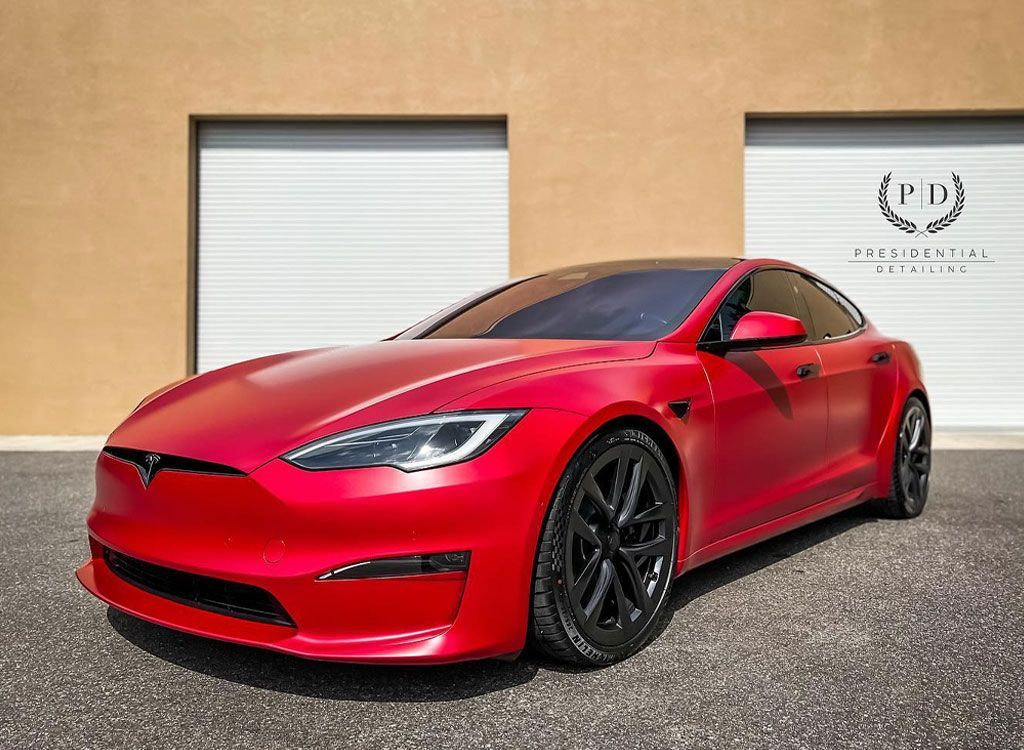Ultimate Guide to UV Protection and PPF: Safeguarding Your Car's Finish
CALL (813) 723-9679
GET A FREE ESTIMATETo conserve your car's shiny outlook from the damage of UV rays, paint protection films or PPFs, are the superheroes you need. They serve as an invisible shield, warding off harmful elements like stone chips, bug splatter and minor grazes from damaging your vehicle's paintwork. This protective film not only helps retain the brand-new sheen but also effectively prolongs the life of your prized possession. Ready to dive into preserving your ride's aesthetic value?
Paint protection film, or a clear bra, shields your car's finish from damaging ultraviolet rays, preventing color fading and deterioration. PPF serves as a physical barrier against environmental elements, including road debris and contaminants, preserving the exterior and maintaining the vehicle's resale value.
Understanding Paint Protection Film and its Importance
Imagine this: Your car's shiny paint job is like its armor, facing the everyday onslaught of environmental hazards. A paint protection film acts like a shield against stone chips, bug splatter, minor abrasions, and even hail damage—those little foes that can silently chip away at your vehicle's exterior over time. It's a tough, transparent layer that takes the hit instead of your car's paint. PPF helps maintain your car's factory finish, ensuring that the original paint remains unscathed underneath. This is crucial for preserving the resale value of your vehicle since potential buyers are willing to pay more for a well-maintained, undamaged exterior.
Advantages of PPF
PPF not only shields your car from road debris and minor impacts but also guards against UV damage, preventing color fading and deterioration. By reducing the need for frequent touch-ups and repaints, a paint protection film offers long-term cost savings, making it an investment in preserving your vehicle's value. When you consider the constant exposure to harsh elements, such as sunlight, road salt, tree sap, and bird droppings, it becomes clear why a protective film is necessary. These factors can gradually deteriorate your car's exterior if left unaddressed, leading to costly repairs or diminished aesthetics over time.
It's important to dispel myths about PPF. Some people believe it causes discoloration or peeling, but advancements in thermoplastic urethane films have addressed these concerns. Additionally, professional installation ensures that the film adheres securely to your vehicle without damaging the underlying paint. Before dismissing the idea of investing in a paint protection film due to common misconceptions, it's essential to seek clarification and consult professionals to understand the benefits and quality standards associated with modern protective films.
Understanding the vital role of paint protection film in shielding your vehicle from everyday wear and tear lays the foundation for informed decisions regarding its application and maintenance—an investment in preserving both the aesthetic appeal and resale value of your car.
PPF Installation Process
When it comes to protecting your car's paint with PPF, the installation process is critical, involving several steps and skilled professional hands to ensure that the film is correctly applied and provides optimal protection for your vehicle. Let's break down the key steps involved in the paint protection film installation process, starting with surface preparation.
Surface Preparation
Before installing the PPF, the vehicle's surface undergoes meticulous cleaning to ensure it is free from any dirt, wax, or other contaminants. This step is crucial because any leftover impurities can affect how well the film adheres to the surface. It’s like making sure you have a clean canvas before starting a masterpiece painting—you want the surface to be spotless for the best results. Additionally, surface preparation may involve minor paint correction to remove any imperfections that could be visible under the film. The goal here is to create a smooth and flawless base for the paint protection film application.
Custom Fitting
Once the surface is prepped, the paint protection film is carefully measured and cut to fit each specific area of the vehicle. This is where precision matters, as each section needs to be accurately covered without leaving any exposed areas vulnerable to damage. Professional installers take great care to ensure that the film perfectly covers every curve and contour of your vehicle. This custom fitting guarantees that your car has not only comprehensive but also seamless protection.
Application and Adhesion
The application stage demands attention to detail as professional installers meticulously apply the PPF to the vehicle's surface. They ensure proper alignment and adhesion while minimizing the risk of air pockets. Achieving seamless coverage without any bubbles or creases is essential, as it enhances appearance while ensuring maximum protection. To minimize air pockets, professional installers use specialized tools and techniques to squeeze out any trapped air during the application process. Additionally, they use heat guns to help the film conform smoothly around complex curves and edges, creating a uniform and unobtrusive layer of protection.
Understanding these intricate steps in the paint protection film installation process offers insight into why professional installation is vital for maximizing the benefits of PPF in safeguarding your car’s finish. The precise adherence of the film achieved through these steps provides not only protection but also a near-smooth appearance that maintains your vehicle's aesthetic appeal.
UV Protection and Physical Damage Resistance Features of PPF
When you think about it, the sun's rays can be as damaging to your car as they are to your skin. UV rays are known to cause paint to fade and deteriorate over time, leaving your car's exterior looking lackluster. This is where paint protection film comes in as a reliable shield against the harmful effects of UV radiation. PPF acts as a barrier between the harmful ultraviolet rays and your car’s paintwork. The film is designed to absorb and disperse the impact of UV rays, preventing them from penetrating through to the paint layer. This effectively guards against paint fading, maintaining the lustrous appearance of your vehicle for an extended period.
Beyond providing UV protection, a paint protection film acts as tough armor to protect your car's surface from harm from road debris. It effectively protects against chipping, scratching, and etching that could result from gravel, sand, or other abrasive materials on the road. To understand its effectiveness in protecting against physical damage, it’s important to recognize that PPF is designed with robust impact-resistant properties. In practical terms, this feature ensures that small rocks, road debris, or even minor collisions with insects do not leave behind unsightly marks or blemishes on your car's surface.
By actively mitigating these risks, PPF helps preserve the factory finish of your vehicle, maintaining its aesthetic appeal and overall value over time. This means you can drive with peace of mind, knowing that your car's exterior is guarded against common sources of wear and tear encountered on the road.
Evaluating PPF Lifespan: When Should It Be Replaced?
Imagine your car as the protagonist in a never-ending battle against external forces—UV rays, road debris, and environmental contaminants. The paint protection film is like resilient armor, shielding your car and taking the hits so your car's paint job doesn't have to. But just like any protector, it can't last forever. The durability of PPF is influenced by various factors, such as the quality of the film, environmental conditions, and regular maintenance.
Let's first consider the quality of the film. Not all PPFs are created equal. Higher-quality films are designed to withstand harsh environmental elements and maintain their protective properties for a longer period of time. They are engineered to resist fading, discoloration, and damage from UV exposure. In contrast, lower-quality films may start showing signs of wear sooner and require replacement earlier. Environmental conditions also play a significant role in determining the lifespan of paint protection film. Extreme temperatures, high humidity, and prolonged sun exposure can accelerate the degradation of the film. For example, cars frequently parked outdoors or in areas with high pollution levels may experience faster deterioration of the PPF compared to those kept in more controlled environments.
Additionally, regular maintenance is crucial for extending the lifespan of your clear bra. Proper care, such as using non-abrasive materials for washing and the periodic application of protective sprays designed for PPF, can rejuvenate its self-healing properties and maintain its glossy appearance. Neglecting maintenance can lead to premature degradation of the film. So, what is the average lifespan of PPF? High-quality films installed by professionals using precise application techniques can last anywhere from 5 to 10 years before needing replacement. However, there are clear indicators that signal the need for replacing the PPF. Here are the following:
- Yellowing: Over time, some low-quality films may begin to yellow due to UV exposure or environmental contaminants. This affects not only the appearance but also the level of protection provided.
- Visible Damage: Any visible tears, scratches, or punctures in the paint protection film compromise its ability to shield against damage. When you notice these, it might be time to schedule a PPF replacement.
- Loss of Adhesion: If you notice any areas where the paint protection film is lifting or peeling away from the surface of the vehicle, it’s a sign that it's time for a replacement.
If you observe any of these signs on your paint protection film, it's best to consult a professional for assessment and potential replacement. Professional evaluation ensures that any underlying issues are identified and addressed effectively. Understanding how to evaluate the condition of your paint protection film empowers you to take proactive steps towards maintaining your car's finish and preserving its value over time.
Top-rated Paint Protection Film Service in Tampa, FL
Discover the ultimate defense for your vehicle's paint at Presidential Automotive Detailing, the go-to destination for
top-rated paint protection film service in Tampa, FL. Our skilled technicians employ cutting-edge techniques and premium materials to ensure unparalleled protection against chips, scratches, and environmental damage. With meticulous attention to detail and a commitment to excellence, we deliver results that exceed expectations every time. Drive with confidence, knowing your prized possession is shielded from the elements while maintaining its flawless appearance. Don't compromise on quality—trust Presidential Automotive Detailing for all your paint protection needs. Schedule your appointment today to safeguard your investment! Call us at
(813) 723-9679 to get started!

